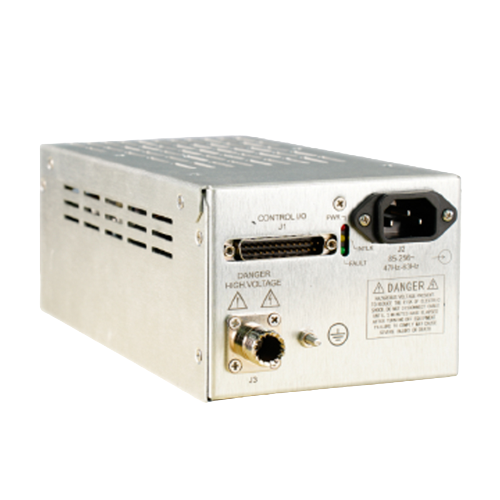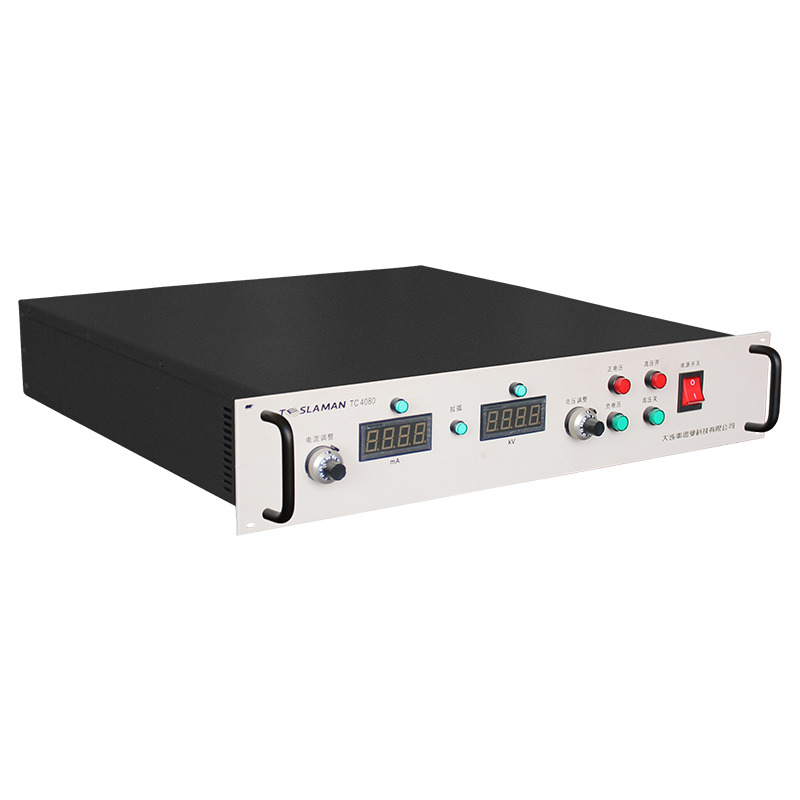Precision Enhancement Schemes for High-Voltage Power Supplies in Excimer Lasers
Excimer lasers, as core deep-ultraviolet light sources, are indispensable in lithography, precision medical applications, and micro-nano processing. Their performance critically depends on the repetition accuracy of the high-voltage power supply—i.e., the stability and consistency of output pulse energy. However, traditional power supplies face limitations in repetition accuracy due to switch lifetime, circuit impedance matching, and thermal effects. The following are key technical solutions to enhance repetition precision:
1. All-Solid-State Pulse Excitation and Magnetic Pulse Compression
Traditional thyratron switches suffer from reduced lifespan at high repetition rates (>1 kHz), leading to energy instability. The all-solid-state pulsed power module (SSPPM) employs semiconductor switches (e.g., IGBT) combined with multi-stage magnetic pulse compression circuits to compress μs-level high-voltage pulses to 0.1 μs-level, achieving a rise time ≤90 ns and stable operation at 1 kHz. The energy transfer efficiency of magnetic switches reaches 59.1%, with no mechanical wear, significantly extending system lifetime. Additionally, resonant boost-multiplier designs (input: 500–2000 V, output: 10–40 kV) reduce the voltage tolerance requirements for front-end semiconductors, bypassing the trade-off between high voltage and high current, thereby improving reliability.
2. Secondary-Discharge-Free Circuit Design
Post-gas breakdown, the laser exhibits negative impedance, causing residual energy to form secondary oscillations that damage electrodes and destabilize energy. A novel excitation circuit uses bidirectional energy recovery architecture:
• A pulse transformer with dual primary windings connects to the storage capacitor (C₀) via forward (S1/D1) and reverse (S2/D2) charging circuits.
• When residual energy propagates backward to C₀, the reverse switch S2 activates, recycling energy into the capacitor instead of dissipating it. Tests show ~10% energy savings and complete elimination of secondary discharge (Figure 8), protecting electrodes and ensuring energy consistency.
3. Multi-Parameter Cooperative Control Algorithm
Energy fluctuations arise from gas consumption, thermal drift, and voltage variations. Advanced control systems employ layered PI algorithms and genetic optimization:
• Single-pulse energy control: Separate overshoot (i<g) and non-overshoot (i>g) calculations:
\[
\Delta HV_{E_{m,i}} = K_{eo} \cdot \epsilon_{E_{m,i}} + I_{eo} \cdot \sum \epsilon_{E_{m,i}} \quad (\text{overshoot})
\]
\[
\Delta HV_{E_{m,i}} = K_{eu} \cdot \epsilon_{E_{m,i-1}} + I_{eu} \cdot \sum \epsilon_{E_{m,i-1}} \quad (\text{non-overshoot})
\]
• Dose accuracy control: Integrate dose deviation \Delta HV_{D_{m,i}} = K_{ed} \cdot \epsilon_{D_{m,i-1}} + I_{ed} \cdot \sum \epsilon_{D_{m,i-1}}.
• Thermal compensation: Model temperature effects via HV_{T_e} = P \cdot m \cdot c \cdot r (P: discharge energy, m: medium mass, c: specific heat, r: thermal resistance).
A genetic algorithm optimizes the objective function:
\[
F = w_1 \cdot HV_{E_{m,i}} + w_2 \cdot HV_{D_{m,i}} w_3 \cdot HV_{T_e} \quad (w_1+w_2+w_3=1)
\]
This dynamically adjusts discharge voltage within thermal and voltage constraints, achieving energy stability errors <2%.
4. Thermal Management and Impedance Matching
• Gas and electrode cooling: Metal-ceramic composite cavities enhance heat dissipation and reduce thermal deformation, stabilizing discharge gaps.
• Dynamic impedance matching: Monitor gas composition changes (e.g., halogen decay) and adjust pulse transformer ratios (1:10–30) and magnetic switch saturation to maintain energy injection efficiency >60%.
Conclusion
Enhancing repetition accuracy in excimer laser high-voltage power supplies requires integrating circuit innovations (all-solid-state topologies and energy recovery), intelligent control (multi-parameter optimization), and thermal design. SSPPM resolves switch lifetime issues, secondary-discharge-free circuits improve efficiency and protect electrodes, and genetic algorithm-driven control balances energy, dose, and thermal effects. This enables long-term stability (>6 kHz repetition rate) and sub-mJ pulse energy consistency. Future advancements depend on higher-voltage semiconductor switches, discharge dynamics simulation, and radiation-resistant optical components to meet nanoscale manufacturing demands.




















